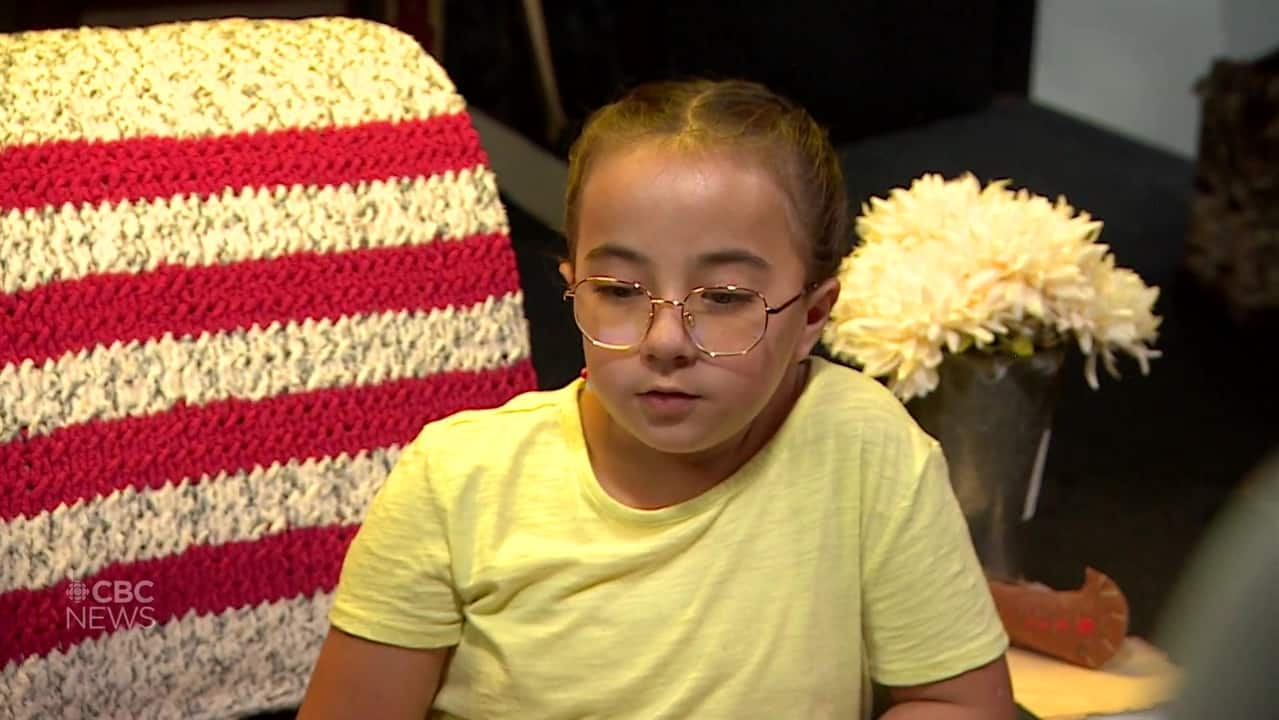Production underway for second season of TV series that teaches kids Cree language and culture

Saskatoon-based television production company, Campfire Stories, has renewed Stories of the North for a second season.
The show is a children’s educational program featuring Moshom, played by Morris Cook, and his granddaughters Natanis and Sekwan, who are played by Claire Walker and Mya Hoskins-Fiddler.
The show encompasses their life in northern Saskatchewan where Moshom tells stories, in animated sequences, about his childhood. He teaches the granddaughters a new word in Cree after each story.
Production is underway and the new season is expected to air on Citytv Saskatchewan in early 2024.
CBC News went behind the scenes of the production and spoke with the cast and creators.
“We are not just teaching them words to repeat, we’re actually teaching them the concept of the word and how it fits into the Cree lifeway. That’s a big step forward,” Lee Crowchild, one of the producers, said.
The new season of Stories of the North is set to air early 2024. The first season was about exposing people to Cree while season 2 will focus on relationships with animals, the planet, and each other. The show encompasses life in north Saskatchewan where in his cabin, Moshom, tells stories in animated sequences, about his childhood, and teaches his granddaughters a new word in Cree after each story line.
“It’s important that we pass on our knowledge. A lot of times, our knowledge and traditions are steeped in our language… It’s a vehicle for us to pass on that language in a much more succinct way.”
Former Chief of Tsuut’ina First Nation Crowchild said that, in his nation, language immersion in schools and administration is a way to inform how language is intertwined with their beliefs and worldview. He said season two will resonate with that idea.
It will also try to shape confidence in young viewers — encouraging them to ask questions and to not feel afraid of getting pronunciations incorrect.

“I play Moshom. I lead the process. I introduce a word, they repeat after me and use it in the context of the educational outcome we want to achieve,” Morris Cook, a fluent Cree speaker, said.
“This is phenomenal because, as we all know, languages are dying at an alarming rate, that’s not excluding Cree even though we are the largest Indigenous speaking people in Canada.”
He said the television show is one way to ensure some Cree words survive and will still be known among children born generations into the future.
Bigger concepts explored this season
Cook said the second season is about relationships and will be packed with more action. He said concepts such as Okâwîmâw Askiy, Cree for Mother Earth, will help children understand the importance of preserving the environment.
The season will also showcase themes of relationships with animals and each other.
“Words like ‘Wâhkôhtowin, how we relate to each other and how all things are connected with that word, so bigger concepts are being explored this year.”

Mya Hoskins-Fiddler, who plays the role of Natanis, said she’s excited to be shooting for season two.
“I think it’s pretty great that people my age and people that are younger get to learn more like Cree language, kind of like what I’m learning.”

Indigenous life experience on TV
Betty Ann Adam, who directed the last season and is directing four episodes of the upcoming season, said she didn’t see any Indigenous children on television or any Indigenous languages being spoken when she was growing up.
“I love the idea that Indigenous kids can watch TV and learn a few words of Cree, and the non-Indigenous kids too. Everybody can turn it on and see a few words of Cree in the context of Indigenous life experience,” Adam said.
Adam said too often images of Indigenous people have been connected to sad stories about residential schools, high rates of incarceration and other issues.
“We’re so much more than that, right? We’re humans. We have a family. We have traditions. We have our own ways of gathering food in certain places and cooking in certain ways, we have a worldview that talks about our interrelationship with the natural world and with animals.”



